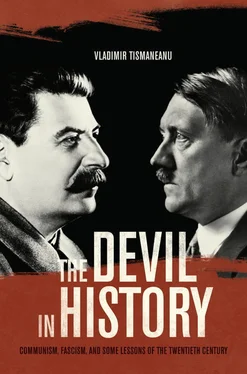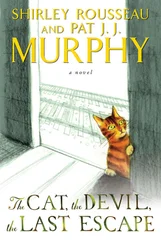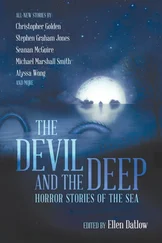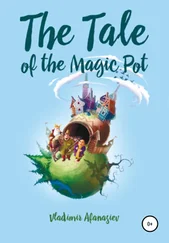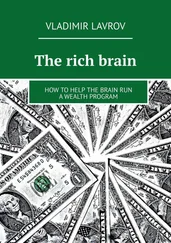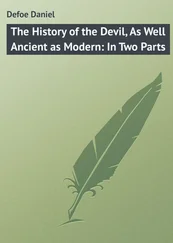91. Bradatan, “Philosophy and Martyrdom,” in Marx’s Shadow , ed. Bradatan and Oushakine, p. 120.
92. Ulrich Klaus Preuss and Ferran Requejo Coll, eds., European Citizenship, Multiculturalism, and the State (Baden Baden: Nomos, 1998), p. 127.
93. Quoted in Paul Lawrence, Nationalism: History and Theory (New York: Pearson Education, 2005), p. 170.
94. See Ghia Nodia, “Rethinking Nationalism and Democracy in the Light of the Post-Communist Experience,” in National Identity as an Issue of Knowledge and Morality: Georgian Philosophical Studies , ed. N. V. Chavchavadze, Ghia Nodia, and Paul Peachey (Washington, D.C.: Paideia Press and the Council for Research in Values and Philosophy, 1994), p. 54.
95. For a discussion of Bourdieu’s concept of habitus in the context of the analysis of nationalism, see Paul Warren James, Globalism, Nationalism, Tribalism: Bringing Theory Back (London: Sage, 2006), pp. 55-57.
96. Anthony D. Smith, Nationalism and Modernism: A Critical Survey of Recent Theories of the Nation (London: Routledge, 1998).
97. Roger Griffin, “Introduction: God’s Counterfeiters? Investigating the Triad of Fascism, Totalitarianism and (Political) Religion,” Totalitarian Movements and Political Religions 5, no. 3 (Winter 2004): 305.
98. See Norman Manea, “Intellectuals and Social Change in Central and Eastern Europe,” Partisan Review , no. 4 (Fall 1992): 573-74.
99. For the politics of intolerance in Tudjman’s Croatia, see Goran Vezic, “A Croatian Reichstag Trial: The Case of Dalmatian Action,” Uncaptive Minds 7, no. 3 (Fall-Winter 1994): 17-24.
100. Furio Cerutti, “Can There Be a Supranational Identity?” Philosophy and Social Criticism 18, no. 2 (1992): 147-62.
101. See Jan-Werner Müller, Constitutional Patriotism (Princeton, N.J.: Princeton University Press, 2007).
102. See S. Frederick Starr, ed., The Legacy of History in Russia and the New States of Eurasia (Armonk, N.Y.: M. E. Sharpe, 1994); Roman Szporluk, ed., National Identity and Ethnicity in Russia and the New States of Eurasia (Armonk, N.Y.: M. E. Sharpe, 1994).
103. Václav Havel, To the Castle and Back (New York: Knopf, 2007), p. 328.
104. Stephen Kotkin with a contribution by Jan T. Gross, Uncivil Society: 1989 and the Implosion of the Communist Establishment (New York: Modern Library, 2009), p. 116.
105. Jan Patoĉka quoted in Findlay, Caring for the Soul , p. 152.
106. Horvath, The Legacy , p. 19.
107. Applebaum, “Dead Souls.”
108. For an informative approach to contemporary efforts to resurrect Marxism, including the disconcerting “theological turn” inspired by the writing of Jacob Taubes on Paulinian eschatology, see Göran Therborn, From Marxism to Post-Marxism (London: Verso, 2008).
109. Norman Naimark, Stalin’s Genocides (Princeton, N.J.: Princeton University Press, 2010); Vladimir Tismaneanu, “Democracy and Memory: Romania Confronts Its Commmunist Past,” in “The Politics of History in Comparative Perspective,” ed. Martin O. Heisler, special issue, Annals of the American Academy of Political Science 617 (May 2008): 166-80.
6. MALAISE AND RESENTMENT
1. See Jan Urban, “Europe’s Darkest Scenario,” Washington Post , Outlook Section, October 11, 1992, pp. 1-2. See G. M. Tamás, “Post-Fascism,” in East European Constitutional Review (Summer 2000): 48-56.
2. Adam Michnik, “The Velvet Restoration,” in Revolutions of 1989 , ed. Vladimir Tismaneanu (London: Routledge, 1999), pp. 244-51.
3. See Vladimir Tismaneanu, Fantasies of Salvation: Democracy, Nationalism and Myth in Post-Communist Europe (Princeton, N.J.: Princeton University Press, 1998, paperback 2009).
4. For further interpretations of the implications of Jowitt’s pioneering approach, see Vladimir Tismaneanu, Marc Howard, and Rudra Sil, eds., World Order after Leninism (Seattle: University of Washington Press, 2006).
5. For a thorough analysis of the uses of the past in post-Communist Europe, see Tony Judt, Postwar: A History of Europe since 1945 (New York: Penguin Press, 2005), esp. “After the Fall: 1989-2005,” pp. 637-776; and Tony Judt, “The Past Is Another Country: Myth and Memory in Post-War Europe,” in Memory and Power in Post-War Europe: Studies in the Presence of the Past , ed. Jan-Werner Müller (Cambridge: Cambridge University Press, 2002), p. 180.
6. See William Outhwaite and Larry Ray, Social Theory and Postcommunism (Oxford: Blackwell, 2005); Krishan Kumar, 1989: Revolutionary Ideas and Ideals (Minneapolis: University of Minnesota Press, 2001).
7. In this chapter I elaborate upon and revisit the main ideas I put forward in my introduction to Vladimir Tismaneanu, ed., The Revolutions of 1989 (London: Routledge, 1999); as well as Reinventing Politics: Eastern Europe from Stalin to Havel (New York: Free Press, 1992; revised and expanded paperback, with new afterword, Free Press, 1993). A previous version of this chapter appeared in Contemporary European History 18, no. 3 (2009): 271-88. I developed these ideas in a volume published in Romanian, Despre 1989 (București: Humanitas, 2009). See also Vladimir Tismaneanu, “The Demise of Leninism and the Future of Liberal Values,” in Marx’s Shadow: Knowledge, Power, and Intellectuals in Eastern Europe and Russia , ed. Costica Bradatan and Serguei Alex. Oushakine (Lanham, Md.: Lexington Books, 2010), pp. 221-42; and Vladimir Tismaneanu and Bogdan Iacob, eds., The End and the Beginning: The Revolutions of 1989 and the Resurgence of History (New York and Budapest: CEU Press, 2012).
8. Eric Hobsbawn, The Age of Extremes: A History of the World, 1914-91 (New York: Pantheon Books, 1994), pp. 461-99; see also George Lichtheim, “The European Civil War,” in The Concept of Ideology and Other Essays (New York: Random House, 1967), pp. 225-37; Bernard Wasserstein, Barbarism and Civilization: A History of Europe in Our Time (Oxford: Oxford University Press, 2007), pp. 666-704.
9. See John Keane, Civil Society: Old Images, New Visions (Stanford, Calif.: Stanford University Press, 1998).
10. Ernest Gellner, Conditions of Liberty: Civil Society and Its Rivals (New York: Allen Lane and Penguin Press, 1994).
11. Daniel Chirot, “What Happened in Eastern Europe in 1989,” in The Revolutions of 1989 , ed. Tismaneanu, pp. 19-50; see also Raymond Taras, ed., The Road to Disillusion (Armonk, N.Y.: M. E. Sharpe, 1992).
12. Stephen Kotkin with a contribution by Jan T. Gross, Uncivil Society: 1989 and the Implosion of the Communist Establishment (New York: Modern Library, 2009), p. 143.
13. Judt, Postwar , p. 584.
14. See Václav Havel’s reflections on post-1989 politics in Summer Meditations (New York: Vintage Books, 1992) and To the Castle and Back (New York: Knopf, 2007).
15. For the exhaustion of ideological-style secular religions, see Agnes Heller and Ferenc Fehér, The Grandeur and Twilight of Radical Universalism (New Brunswick, N.J.: Transaction Books, 1991); and S. N. Eisenstadt, “The Breakdown of Communist Regimes,” in The Revolutions of 1989 , ed. Tismaneanu, pp. 89-107.
16. Judt, Postwar , p. 564.
17. Russian political scientist Gleb Pavlovsky quoted by Robert Horvath, The Legacy of Soviet Dissent: Dissidents, Democratisation and Radical Nationalism in Russia (London: Routledge, 2005), p. 41.
18. Krishan Kumar, 1989: Revolutionary Ideas and Ideals (Minneapolis and London: University of Minnesota Press, 2001).
Читать дальше
